Nuclear physicist Martin Venhart is studying the shape of atomic nuclei in order to answer the long-standing question of why matter in the atomic nucleus does not tend to form a round shape. In addition, he will soon become the new chair of the Slovak Academy of Sciences (SAV), Slovakia’s premier national public research organisation.
In this interview with The Slovak Spectator, he talks about the reasons why we currently cannot answer the question of atomic shape and why his group is probably the last in the world trying to find the answer. His students learn skills that are needed in the nuclear industry – an industry that, at least within Slovakia, is currently in dire need of people.
"I have a philosophy that I do not employ my doctoral students; I make then go abroad after they have defended their theses. They must spend at least two years abroad employed, to see and learn something new, to make contacts, to become independent from me," he says.
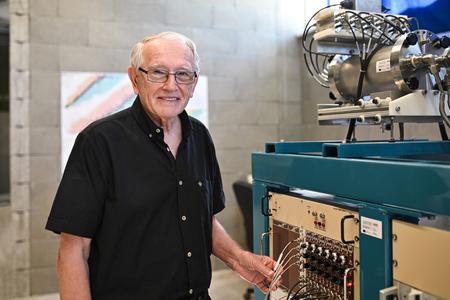
In a few weeks, you will take up the position of chair of the Slovak Academy of Sciences, at a time when the academy is also receiving more money.
The budget is now very good because we have a system of performance contracts. This is the first time that the state has pre-paid us for future performance, so we will receive money for research; also, the parameters in which improvements are expected have been defined. When the SAV meets these conditions, the system should continue. This is the government's commitment, as expressed in the long-term strategy, which no one has cancelled yet. It is valid until the end of 2026.
We do not know what will happen after that. If the system does not continue, we will have a huge problem maintaining the current standards. SAV has a large investment debt, its lower estimate is €50 million – and this is just infrastructure I'm talking about: buildings, furniture. For the first time in many years, it is now possible to deal with literal emergency situations.
What else does the science sector in Slovakia lack?
A stable and predictable grant system. In the past, APVV [the Slovak Research and Development Agency] calls would not be announced because there was no money. Fortunately, things are improving, although the success rate is still not very high, because applications are many and the agency's capabilities are few. There are no grant schemes from which it is possible to pay people. We lack support for excellence.
To stay up to date with what scientists in Slovakia or Slovak scientists around the world are doing, subscribe to the Slovak Science newsletter, which will be sent to readers free of charge four times a year.
Why did you run for the post of SAV chair?
I want to change many of these things, and I need the competences to do so.
What will you bring to the role?
The SAV needs to invest more in people, not only when it comes to science, but also in personal development and the education of leaders. However, this is a problem not only in Slovakia, but also in Europe as such. This is the main theme.
At the SAV, our flagship project is the Impulse programme, the largest grant scheme, which we give to top and established scientific personalities. We have taken inspiration from Hungary. The interesting thing about their scheme is that it also has a lower limit, so projects that require less money are not eligible. A new topic is also required. We managed to move the evaluation process outside the SAV, make it international and have it done in two rounds. However, from our budget we are not able to cover more than three such projects a year, which is desperately low for us.
There is interest: the success rate is around 10 percent. For comparison, Hungary gives out 35 projects a year and is, among the V4 countries, by far the most successful when it comes to ERC grants. We need to improve this, and we will look for a way to increase the number of projects and show that this is the right path for Slovakia. We will also prepare development programmes to identify potential future leaders, so we will have to communicate with the directors of individual institutes. I see such people in the upcoming generation, so they need to be trained and sent abroad.
Society has a problem not only with leaders, but also with understanding scientific facts. This affects not just Slovakia. Can the SAV do something about it?
This is one of its main tasks. Expert opinions must be heard. At the moment, the academy is rather quiet.
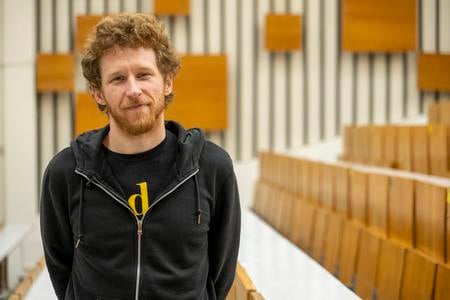
Do you mean in terms of commenting on public affairs? Aren't you afraid that you will be accused of getting involved in politics?
This has been happening for years, so we are ready for this. Of course, there are certain boundaries and the SAV must remain non-partisan. By definition, science cannot be apolitical, because it is financed from public funds, and politicians make decisions about those. When we comment on political decisions, we comment objectively – on their contents, not on the politics. The SAV or science in general should be involved in the creation of new policies – not only Slovak, but also European as well. During my period as chairman, we will continue to have one of the best experts on conspiracy theories, Zuzana Panczová. The academy must be at the forefront of such an effort. I don't know if we will win this fight, I think that in the end we will. But now the whole world is heading towards a disaster.
What does SAV say about the government wanting it to assess the Covid-19 vaccines? Who will pay for that?
The academy will not conduct vaccine assessment, but will analyse their composition, taking into account the presence of DNA. The means for the analysis based on what the Health Ministry requested, will be provided by the Education Ministry.
Is it appropriate for the government to treat SAV like this?
One of SAV's tasks is to respond to important issues that resonate in the society.
At school, we were shown a simplified model of the atom, which looked either like the Solar System or several ellipses around a cluster of particles. What is it like in reality?
I don't know if we can even talk about the shape of atoms, but we can talk about the shape of the atomic nucleus. It represents 99.98 percent of the mass of the entire atom, yet it occupies such a small space. If an atom were the size of a football field with the nucleus in the middle, the latter would be the size of a ping-pong ball. The nucleus is generally not round. This is one of its basic properties, which we have known since the 1930s. We still don't know the reason why matter does not tend to have a spherical distribution like water does when released into space.
What makes it so difficult to find that out?
We have relatively little data. Nuclei are very small, very far apart, and under normal circumstances, they do not make themselves known outside the laboratory. At the [SAV’s] Institute of Physics we focus on the structure of only those nuclei that have an odd number of nucleons. This is because nucleons – protons and neutrons – tend to form pairs. They have a property called spin. It's very difficult to illustrate it, but for a moment – although it's wrong – let's pretend that they actually spin. Since it's a vector quantity, it has a direction. They arrange themselves in an antiparallel way, forming a pair with one spinning upwards and the other downwards. One nucleon – either a proton or neutron – ends up without a partner. It would be a problem if there were to be a proton and a neutron that were both unpaired.
Why?
This presents a problem for understanding such a nucleus. Yes, such nuclei exist. When there is a paired nucleus and an unpaired proton and neutron, we have three objects that interact, and in quantum mechanics each additional object represents a huge increase in complexity. The information that we need to obtain is there, but it is very difficult to do.
Let's go back to that one nucleon.
It acts as a spectator who looks at the shape of the nucleus. The spectrum of radiation that the nucleus emits carries information about its shape. When there is no unpaired nucleon, this information is available as a square, which can be either positive or negative. In such an odd-numbered nucleus, we can tell whether it is shaped like a rugby ball or flattened like a disc, and even whether the axial symmetry is preserved. One could say that we are perhaps the last group in the world that systematically deals with these odd-numbered nuclei.
Why are so few people involved in this research?
There is a price to pay, and that price is that the information from the experiment is incredibly complex. An even-numbered nucleus has, say, three excited states, but an odd-numbered nucleus has 50 or 100. We have to find, identify and describe them all. Moreover, transitions between them are also possible – when a nucleus has excess energy, it gets rid of it and emits it as gamma radiation. It does not have to go to the ground state, but only to a lower one in a cascade of states. It can be said that the number of transitions grows as the number of permutations, i.e. 3 factorial and 100 factorial. The resulting radiation spectrum is incredibly complicated for an odd-numbered nucleus. This is already on the edge of what can be done today. If there were an unpaired proton and neutron at the same time, it would be an order of magnitude more complex.
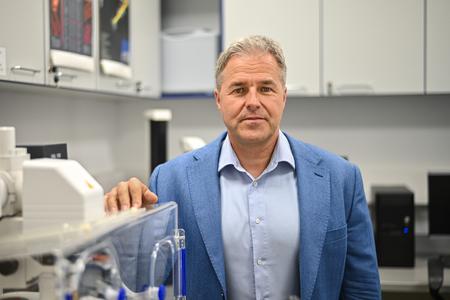
So the problem is with what the current technology is capable of?
Yes. Without a doubt, this is an extremely interesting topic for the future, but I'd say that even in my lifetime we will not have enough information about nuclei that have both an unpaired proton and an unpaired neutron at the same time.
In physics nowadays, there is a lot of talk of a breakthrough that would be needed to move us forward. Could this be one such breakthrough?
Yes. The question of deformation and its cause is worthy of the Nobel Prize in Physics.
How do you study nuclei with odd nucleons?
We have a new and unique type of detector called Tatra. We used it at CERN. It has very good resolution, but we still found several ways to improve it. This allows us to study these nuclei and obtain information about them. When there are many excited states, and therefore the nuclei are close to each other, some transitions have very low energy. And that is a problem, because it is difficult to observe and is quickly lost. Most detectors have an insensitive layer on the surface that the particle has to overcome to get to the sensitive part.
Low-energy radiation cannot overcome this layer. There is a significant part of the information that we do not have. We do not even know how big is the part that we are missing. This is the basis of our ERC project, which is currently in the evaluation stage. It has advanced to the second round at the Advanced level, which, to my knowledge, has only happened twice in the case of Slovakia, the first time in 2006, and the other a few years ago. It is possible it happened more, but I just don’t know about them.
When will you know the result?
In June. I do not dare to predict how it will turn out. If all goes well, we will build another completely new type of spectrometer that, in addition to including everything we invented with Tatra in terms of resolution, will also extend it to low energies. We think we know how to do it. We are currently in a state where we cannot move further on paper, using simulations, and we have to build a prototype detector and test things. We can only do this with the help of the grant; no other available scheme in Slovakia or Europe will allow us to do this. The future of our group depends on this decision.
Several scientists have told me that, in their opinion, Slovakia should not try to do everything in science but should focus on a certain field and excel in it. Is this one of those fields?
Absolutely, yes. One of the biggest reasons why this is important for Slovakia is that we educate experts in the field of nuclear technologies. My doctoral students have to learn about cryogenic and vacuum technology, ion beam manipulation, and detection of various types of radiation and safety – they work in a highly radioactive environment. These are all skills that the nuclear industry in Slovakia needs. It is currently suffering from a shortage of qualified people. If we cannot do something about this very quickly, we will not be able to maintain production in nuclear power plants.
There is no other option for Slovakia, nor for Europe. The experiment in Germany [which shut down all its nuclear power plants as part of its ‘energy transition’, but has struggled to manage power supplies as a result] clearly showed this. We are relatively successful in recruiting and attracting students. We should not give up on educating Slovak students and rely on getting some from abroad. At our institute we can involve high school students in our work; some have become co-authors of our papers. I have a philosophy that I do not employ my doctoral students; I make them go abroad after they have defended their theses.
They have to spend at least two years abroad employed, to see and learn something new, to make contacts, to become independent from me. I expect them to push us forward when they bring new topics. And they are starting to come back. Still, I would not want to be the one who determines which areas Slovakia should focus on. I think that quality should assert itself.
You mentioned that we have a shortage of experts. Is the number of students at least growing?
Not yet.
Why is that? Are the studies demanding?
I don't think so. Since they go abroad, many graduates subsequently enter not the Slovak, but the Czech nuclear industry, for example. I greatly appreciate the step taken by the Education Ministry, which introduced incentive scholarships for fields that are prone to shortages of people. However, these are not enough on their own: the number of applications has increased from a few to several dozen. At the same time, it is also necessary to invest in ensuring that departments are prepared to handle the increase.
This article is supported by the ESET Foundation, whose annual ESET Science Award recognises exceptional scientists.


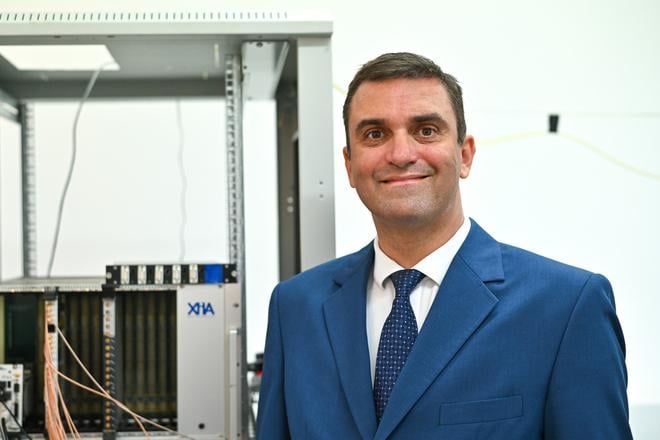 Nuclear physicist Martin Venhart. (source: ESET/Linda Kisková Bohušová)
Nuclear physicist Martin Venhart. (source: ESET/Linda Kisková Bohušová)
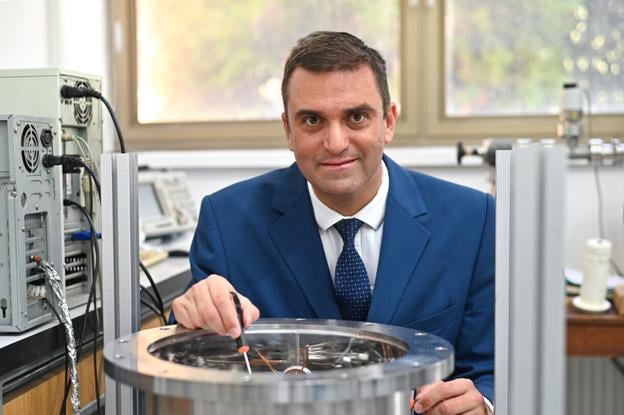 Martin Venhart. (source: ESET/Linda Kisková Bohušová)
Martin Venhart. (source: ESET/Linda Kisková Bohušová)